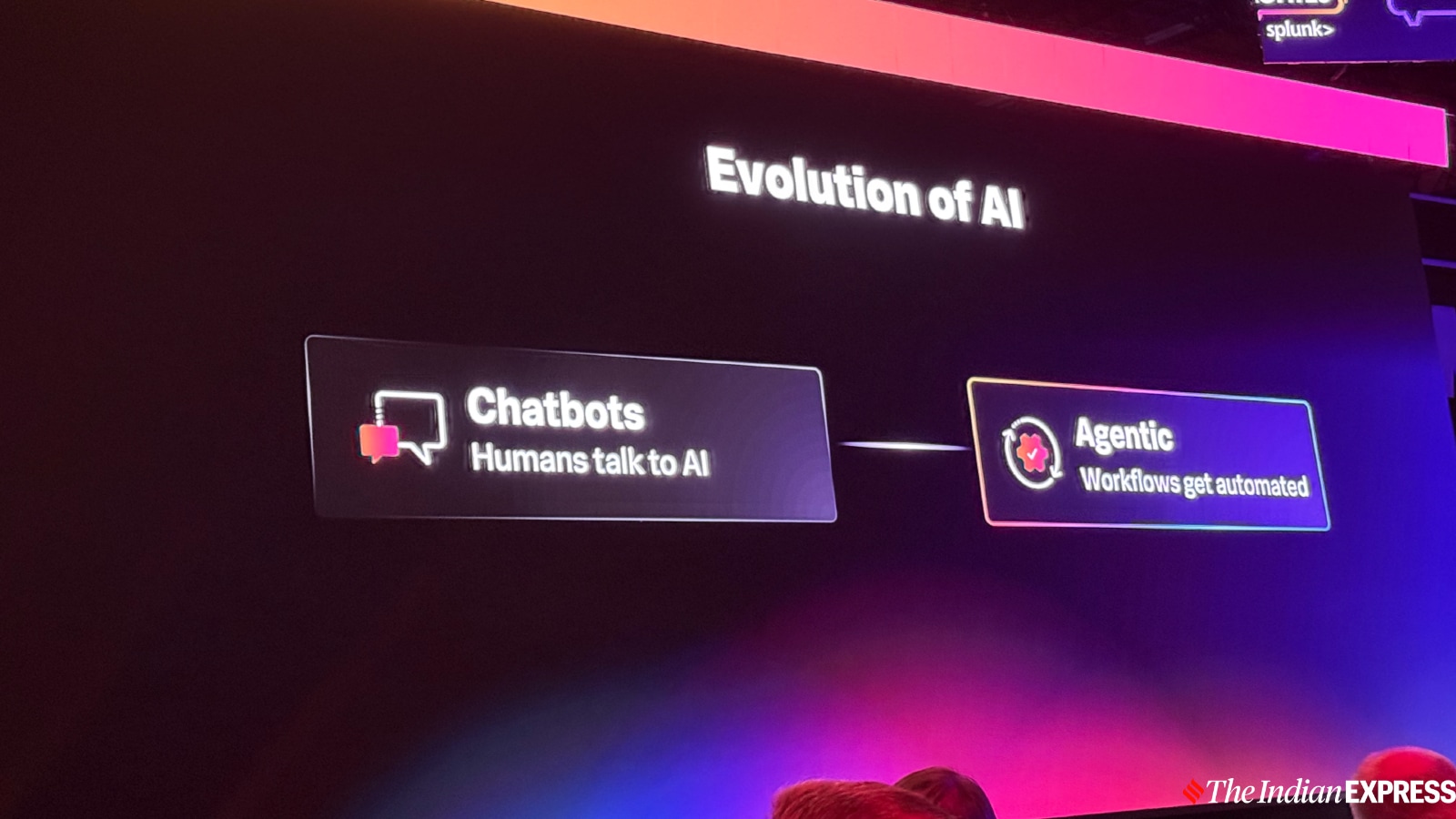“These [AI] models are trained with data, and over the past three years, the industry has done a pretty darn good job training them with human-generated data, whether it be text, images, or video,” said Jeetu Patel, President and Chief Product Officer of Cisco. “What we haven’t done as good a job with is training them on machine-generated data: metrics, event logs, traces, and other telemetry.”
Patel called this a “missed, untapped opportunity” and emphasised that the world needs a machine data platform for the Artificial Intelligence (AI) era. That may be the biggest message Cisco and Splunk’s top executives aimed to deliver during the opening day of Splunk’s annual conference in Boston, Massachusetts, on Monday.
Cisco, along with the team at Splunk, which the enterprise technology titan acquired for $28 billion two years ago, is now working together to protect data and networks and supporting enterprise customers, aiming to become a serious player in AI. This comes at a time when tech giants like Microsoft, Google, and Amazon are spending billions to lead the AI race.
 Three AI impediments were discussed at Splunk 2025: infrastructure constraints, trust deficit due to non-deterministic models, and data gaps from machine-generated data. (Image credit: Anuj Bhatia/Indian Express)
Three AI impediments were discussed at Splunk 2025: infrastructure constraints, trust deficit due to non-deterministic models, and data gaps from machine-generated data. (Image credit: Anuj Bhatia/Indian Express)
“There’s an infrastructure constraint we need to keep in mind, then there’s a trust deficit, and finally, a data gap specifically around machine data. If those are the three main impediments to AI adoption, the good news is that Cisco is actively addressing each one head-on,” Patel said, speaking to a packed audience of customers and partners.
“We provide low-latency, high-performance networking with exceptional energy efficiency for the data centre. We ensure safety and security, enabling the detection of undesired model behaviour, model validation, and enforcement of runtime guardrails. We deliver full-stack observability. And we have a powerful data platform that continues to improve over time. What this means and what we want to promise you is that Cisco is going to be the critical infrastructure for the AI era.”
The opening of Splunk conference featured the launch of Cisco Data Fabric, a new architecture designed to maximise the value of machine data with AI. Powered by the Splunk platform, Cisco Data Fabric aims to dramatically reduce the cost and complexity of managing machine data at scale while enabling its use in AI applications such as training custom models, powering agentic workflows, and correlating multiple streams of machine and business data to extract insights and drive better decisions.
At the core of the Data Fabric architecture is an open-source Time Series Foundation Model, which will power pattern analysis and temporal reasoning on time series data. This will enable advanced capabilities such as anomaly detection, forecasting, and root cause analysis, supporting proactive operations and easing incident response. The model will be released on the Hugging Face platform in November.
Story continues below this ad
During the conference, another major announcement was the launch of Cisco AI Canvas, which is being integrated with the Splunk Cloud Platform. The platform will provide an AI agent to orchestrate analysis workflows and offer collaborative workspaces for teams.
In a live demo, an executive demonstrated AI Canvas in action, demonstrating natural language investigations and real-time collaboration during a simulated security incident investigation.
Also announced was the launch of Splunk Federated Search for Snowflake, a new platform integration that enables users to connect, query, and combine operational and business data across both Splunk and Snowflake environments.
 Splunk is positioned as the ‘machine data fabric for the AI era,’ a key takeaway message. (Image credit: Anuj Bhatia/Indian Express)
Splunk is positioned as the ‘machine data fabric for the AI era,’ a key takeaway message. (Image credit: Anuj Bhatia/Indian Express)
When Silicon Valley giant Cisco agreed to acquire analytics and AI-powered cloud and cybersecurity firm Splunk for $28 billion in 2023, questions were raised about whether it was the right move, given that Splunk competes with the likes of Datadog, Elastic, SolarWinds, and Dynatrace. There was skepticism, both from investors and Cisco observers.
Story continues below this ad
However, the product-focused strategy spearheaded by Jeetu Patel, an Indian-American executive who was promoted last year to streamline Cisco’s product divisions and more recently elevated to President, has sent a strong signal that Cisco intends to be a serious player in AI.
Cisco’s shares are up 10 per cent, and its market capitalisation has reached $264.39 billion. A significant portion of that value was driven by the Secure AI Factory deal with Nvidia in March, which integrates Cisco’s infrastructure products and Silicon One chip with Nvidia’s Graphics Processing Units (GPUs) and networking technology.
Splunk’s annual conference, which will run all week, highlights Patel’s leadership and showcases Cisco’s product-focused strategy, along with the deep integration between Cisco and Splunk technologies.
Cisco has long been the world’s largest maker of computer networking equipment, including switches, modems, and routers. But in recent years, it has pivoted toward the cybersecurity business, and the acquisition of Splunk, whose technology helps businesses monitor and analyse data to reduce the risk of cyberattacks and resolve technical issues more quickly, may help the tech veteran become a strong player in AI and open up new revenue streams.
Story continues below this ad
Taking the stage at the Splunk conference, Patel highlighted the shift from chatbot AI to autonomous agents, predicting an exponential increase in throughput capacity from 8 billion to the equivalent of 80 billion people through AI augmentation. He called this AI transformation unprecedented and a major platform shift.
The writer is in Boston attending Splunk 2025 at the initiation of Splunk.




Average Rating